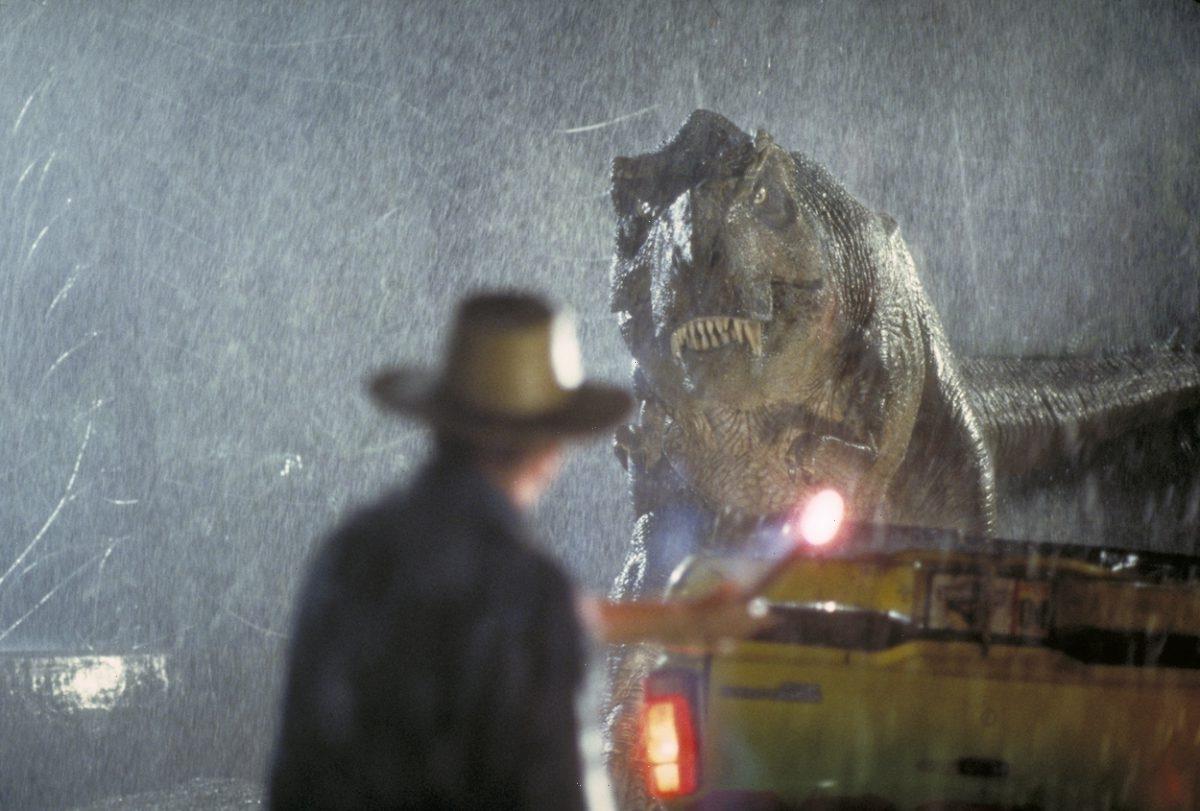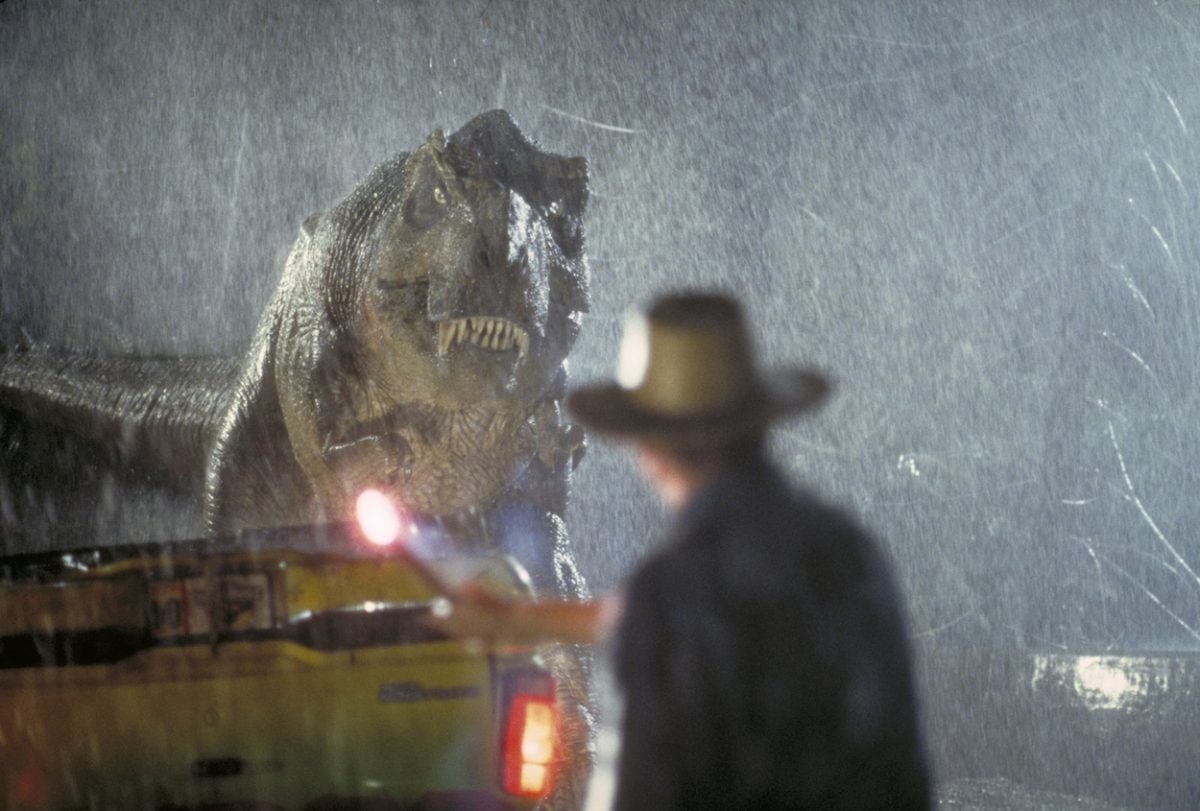Jurassic World Dominion brought a huge cast of dinosaurs along as it stampeded into theaters. For a work of fiction, the movie gets quite a bit right with its dinosaurs, which is something the original Jurassic Park can’t claim. Dominion director Colin Trevorrow said remaking the first movie would be a mistake, but that might be the only way to fix what Jurassic Park got wrong with the T-Rex and raptors.
‘Jurassic Park Dominion’ gets a few things right with its dinosaurs
Dominion isn’t as accurate as a textbook regarding its dino depictions, but the movie gets a lot right.
Director Colin Trevorrow consulted with paleontologists to ensure his fictional reptiles were as accurate as possible. Jurassic World Dominion gets several things right with its dinosaurs because of it.
Some dinosaurs were adept at living in colder climates, so seeing a herd of Parasaurolophus running through the snow isn’t creative liberty. Also, Trevorrow accurately depicts the massive Dreadnoughtus. Finally, many dinosaurs displayed nurturing instincts similar to the raptor Blue’s behavior in Dominion.
The first Jurassic Park isn’t supposed to be 100% factual, but a paleontologist said its depictions of velociraptors and the Tyrannosaurus Rex are way off.
‘Jurassic Park’s T-Rex and raptors are inaccurate, according to an expert
Dr. Hans Sues, Senior Research Geologist and Curator of Vertebrate Paleontology at the Smithsonian Institute, knows a thing or two about dinosaurs. He responded to a question about what Jurassic Park got wrong with the dinosaurs during a Wired Tech Support video (via YouTube). He said the filmmakers’ depictions of the T-Rex and velociraptors are inaccurate.
Sam Neill’s Dr. Alan Grant famously tells Jeff Goldblum’s Ian Malcolm to stay still, so he doesn’t get seen by the T-Rex. In real life, the species had acute senses.
“The movie claims that T-Rex could only detect prey by motion. In fact, when we study the braincase of a T-Rex, we find that it had very large olfactory bulbs, which are the part of the brain that picks up information from the nose. It has a very large opening for the optic nerve, which is the nerve that transmits information from the eye to the brain. And it had a very complicated inner ear that allowed it to hear at least a wide range of low-frequency sounds. So, it would have smelled the actors in front of its snout, and it would have been a very short movie, indeed.”
Sues held up the skull of an adult velociraptor. It appeared no larger than a turkey leg, much smaller than the dinosaurs in the movie. However, the paleontologist said that soon after Jurassic Park finished filming, scientists in Utah discovered raptor species much larger than what the movie shows. Size-wise, the raptors in the movie are way off, though.
The raptors’ size and the T-Rex’s hunting abilities weren’t the only things Jurassic Park got wrong.
What else ‘Jurassic Park’ got wrong with the T-Rex

The dinosaur expert Sues said Jurassic Park got it wrong with the T-Rex’s hunting skills, and the movie also missed the mark on its roar.
The roar we hear in the movie is a mixture of a baby elephant, crocodile, and tiger roar sounds. Yet, based on its skull structure and ability to hear low-frequency sounds, an actual T-Rex roar would have been more of a bass-heavy rumble than an ear-piercing scream.
So Jurassic Park got a few things wrong with its dino depictions. As Sues mentions in his video, the movie isn’t a documentary, it’s entertainment, and it delivers.
For more on the entertainment world and exclusive interviews, subscribe to Showbiz Cheat Sheet’s YouTube channel.
Source: Read Full Article

